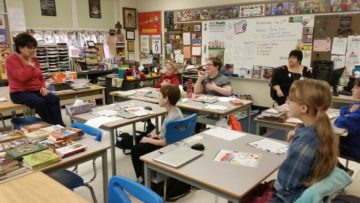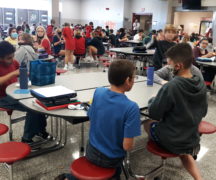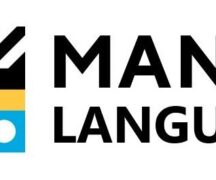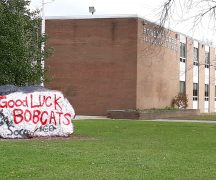By JAN LARSON McLAUGHLIN
BG Independent News
As the students in Laura Weaver’s class last week practiced a new language, there were no new words coming from their mouths. They were talking with their hands.
The fifth grade students in the PACE gifted and talented class held at Kenwood Elementary were learning American Sign Language. They fired off words, asking for their signs – please, thank you, hello, family, numbers – and the necessities like cookie, ice cream and popcorn.
Marta Crow, a retired Penta Career Center teacher for hearing impaired students, kept up with their requests.
The theme in Weaver’s class this year is “communication,” so she thought it would be good for the students to learn unspoken language.
“I wanted them to understand the foundation of it,” she said.
And the lessons went beyond the words themselves.
“You have to understand diversity and adversity,” Weaver added. “It just seemed like the right thing to do with these kids.”
“We’re so used to speaking language, when you don’t hear it, it’s a whole different world,” she said.
Weaver planned to take the sign language lesson further later in the week, with students putting in ear plugs and trying to communicate. They would also be creating clay hands forming a sign language symbol.
“I’ve got 50 pounds of clay waiting,” she said, smiling.
And then they might give Braille a try. “That could be something cool to try,” Weaver said.

Marta Crow teaches sign language to students.
Meanwhile, the students were mastering some simple sentences in sign – many having to do with cookies and popcorn.
And they were learning that placement of the hands is quite important, so “please” isn’t confused for “hungry.”
Crow, who had a deaf roommate in college at Bowling Green State University, said that sign language is misinterpreted no more often than verbal communication.
“It’s such an expressive language,” she said. Unlike verbal communication, in which most people use just their mouths, sign language involves the face, the entire body and the space around it.
“It’s not just the hands,” Crow said, using sign language to tell a short story to the students. “I use the space around me. It’s the whole package.”
Crow has interpreted events using sign language for BGSU graduations, BGSU freshman welcome programs, the inauguration of BGSU President Mary Ellen Mazey, and a funeral. She has to edit some portions, she explained, since sayings like “raining cats and dogs” would not make sense in sign language.
Despite some hearing people feeling the need to shout around deaf people, people without hearing are just as capable of communication as others.
“They are not handicapped,” especially when talking with others who are deaf, Crow said.
“It’s a population of people that have this link,” said Weaver, who wanted to extend that link to her students.





